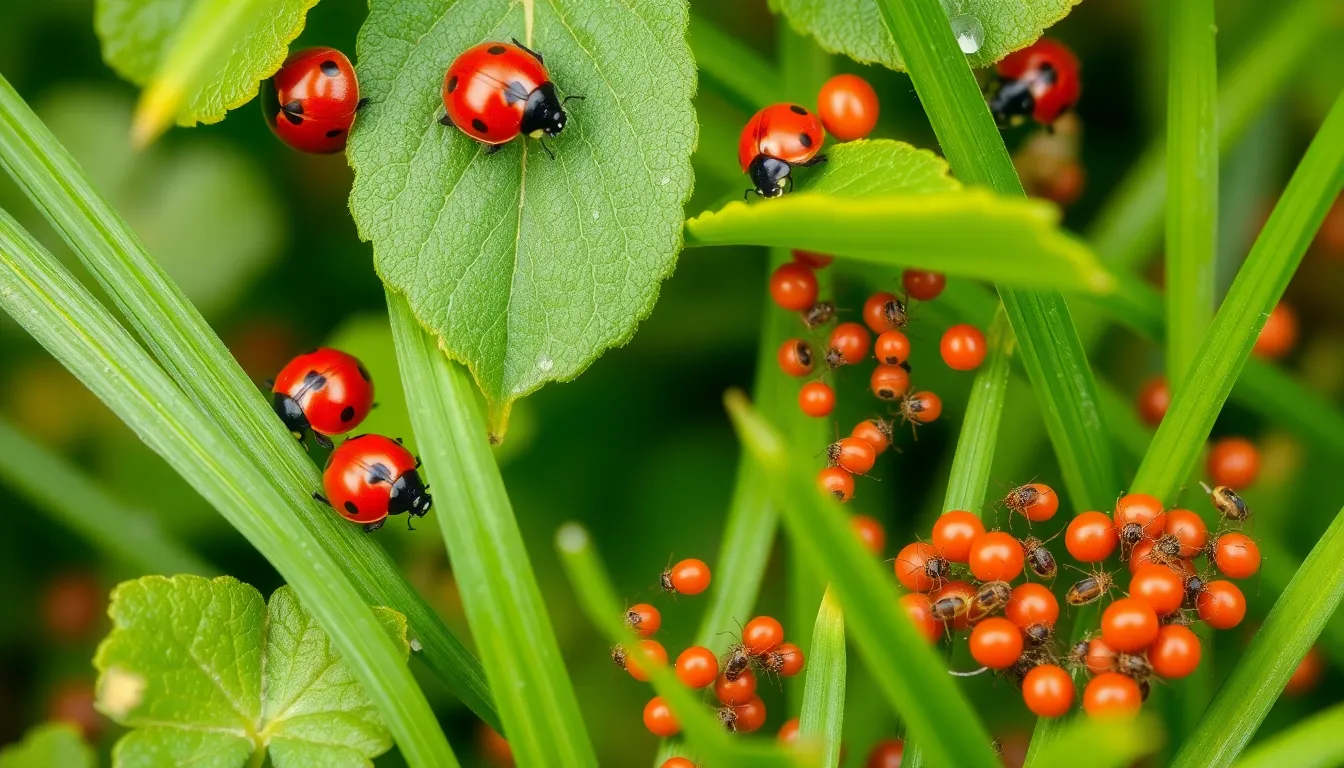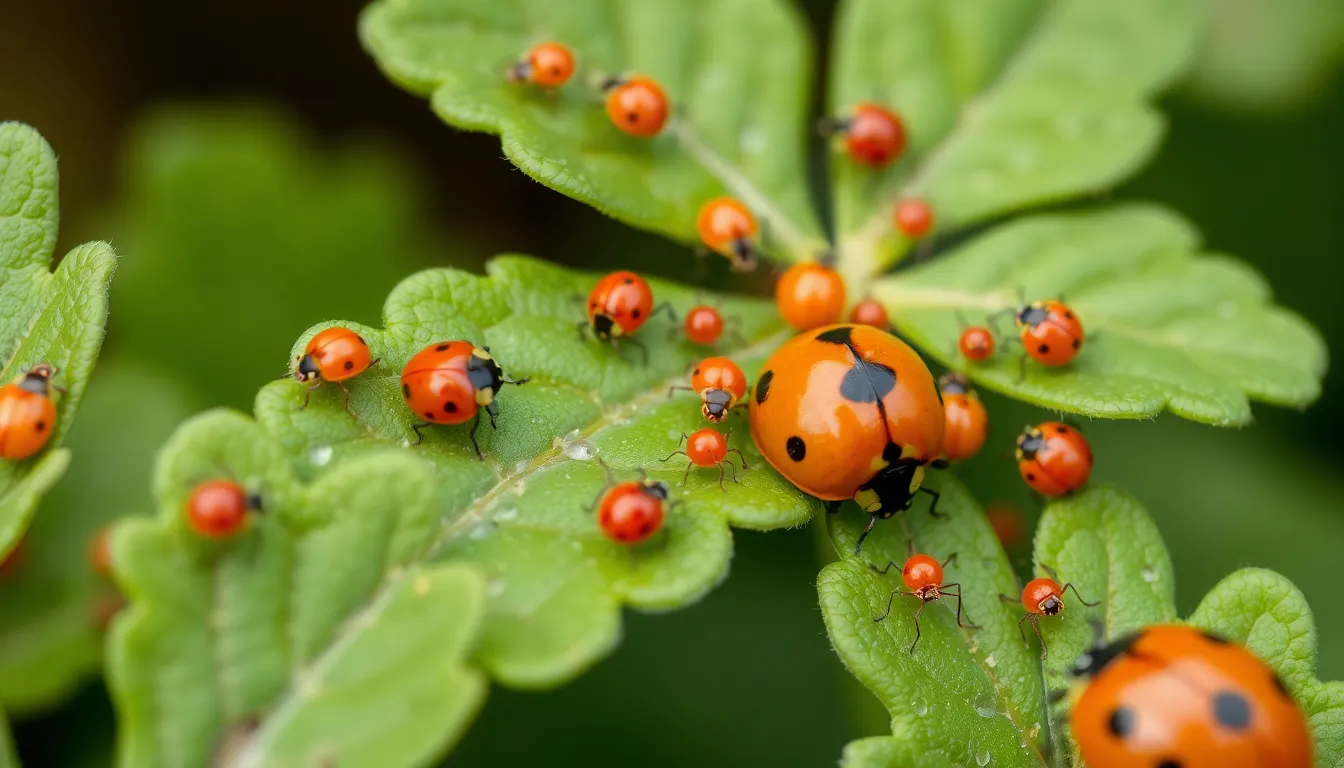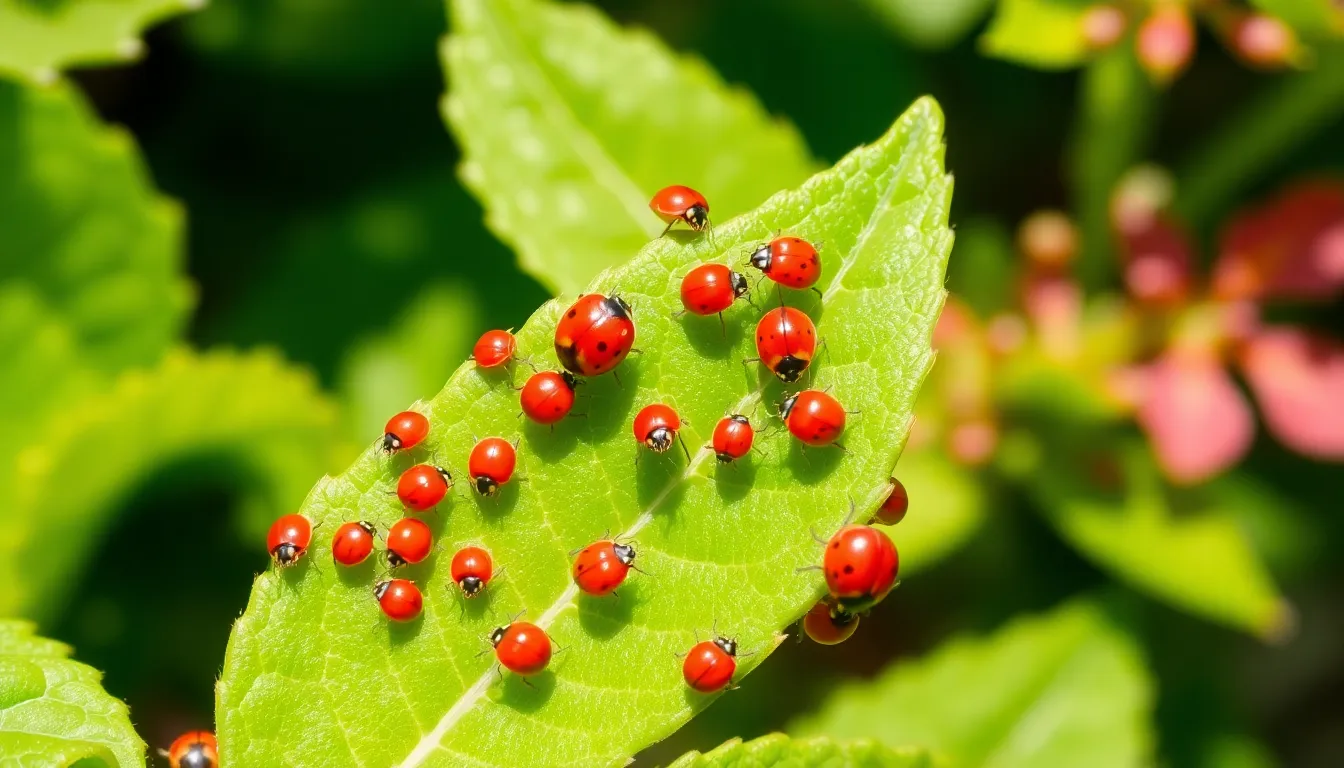Tiny red insects might not be the stars of the insect world, but they sure know how to make an entrance. With their striking color and often mischievous behavior, these little critters can turn a peaceful garden into a buzzing spectacle. Whether they’re marching across your patio or making a cameo in your home, these pint-sized pests can be both fascinating and frustrating.
Tiny Red Insects
Tiny red insects capture attention with their striking appearance. Common examples include spider mites, red bugs, and certain types of ants. These insects thrive in various environments, from gardens to homes. Spider mites, for instance, often infest indoor plants, leading to potential damage. Red bugs, commonly found outdoors, inhabit grassy areas or gardens.
Habitat choice varies among species. While some prefer damp conditions, others thrive in dry environments. The feeding habits of these insects also differ. Leafminers feed on plant tissue, causing noticeable damage. Conversely, certain red ants scavenge for food sources, aiding in waste decomposition.
Behavior ranges widely across these tiny red insects. Many exhibit active behaviors, such as foraging for food or engaging in mating rituals. Social structures appear in ant species, where cooperation benefits the colony’s survival. Adaptability plays a significant role in their longevity and success.
Identification often requires scrutiny. Features such as body shape, size, and habitat help differentiate species. Not all tiny red insects pose threats; many contribute positively to ecosystems by controlling pests or pollinating plants. Occasional nuisances arise from their presence, such as when they invade homes during seasonal changes.
Surprisingly, tiny red insects also draw interest in scientific research. Their resilience and adaptability provide insights into pest control methods. Observing their behaviors enhances understandings of ecological dynamics.
Common Types of Tiny Red Insects


Tiny red insects come in various types, each with unique characteristics and behaviors. Understanding these can help identify their roles in ecosystems.
Ladybugs
Ladybugs, also known as ladybird beetles, are recognized for their round bodies and black spots. They inhabit gardens and fields, actively preying on aphids, which aids in pest control. Brightly colored, they attract attention while providing ecological benefits. These insects undergo metamorphosis, starting as eggs before developing into larvae. The vibrant appearance signals their presence, promoting their reputation as garden guardians. Additionally, ladybugs can tolerate a wide range of temperatures, adapting to different climates effectively.
Red Spider Mites
Red spider mites, minute pests with a distinctive red hue, thrive on various plants, especially during dry conditions. They often cluster under leaves, causing damage as they feed on plant sap. These tiny arthropods reproduce rapidly, leading to quick infestations that can weaken plants. Identification involves observing webbing, which signals significant damage. They can survive adverse conditions by entering a dormant state, showcasing remarkable resilience. Environmental factors play a key role in their population dynamics, influencing their presence in gardens and homes.
Clover Mites
Clover mites, commonly found in lawns and gardens, measure less than a millimeter, making them nearly invisible. Typically red or reddish-brown, they are often seen in large groups, especially during spring and fall. Unlike many pests, clover mites primarily feed on grasses and clover, rarely causing significant harm. Their presence near structures hints at an upcoming migration. They can enter homes through tiny cracks, sparking concern among homeowners. Efficient at reproducing, they often emerge when conditions favor their growth, contributing to their abundance in certain areas.
Habitat and Distribution
Tiny red insects thrive in diverse habitats, adapting to a variety of environments both indoors and outdoors. Their distribution reflects an ability to flourish in multiple geographic settings.
Preferred Environments
These insects prefer areas that provide ample food sources and shelter. Gardens, shrubs, and grassy regions often serve as ideal locations for red bugs and spider mites. In indoor settings, houseplants can attract pests like the red spider mite due to the favorable climate. Moisture levels and plant health significantly influence their presence. Observing these factors aids in identifying where to find specific species.
Geographic Locations
Tiny red insects are widely distributed across various regions. They inhabit temperate climates but can also thrive in warmer zones. Common locations include North America, Europe, and Asia. Some species, like the ladybug, enjoy widespread prevalence in gardens and fields, while others, such as clover mites, prefer residential areas. By mapping their habitats, researchers gain valuable insights into their ecological impact and behavior.
Behavior and Life Cycle
Tiny red insects showcase diverse behaviors and life cycles, which are fascinating aspects of their biology. Their survival often hinges on their feeding habits and reproductive strategies.
Feeding Habits
Feeding habits significantly differ among tiny red insects. For instance, ladybugs primarily consume aphids, benefiting garden health. Red spider mites prefer succulent plant leaves, extracting sap and potentially damaging plants. Clover mites tend to feed on grasses and clover, typically without causing substantial harm. Various red ant species engage in scavenging activities, searching for food across extensive areas. Understanding these habits plays a critical role in pest management, especially when determining appropriate control measures.
Reproduction Process
Reproductive strategies vary among tiny red insects, influencing population dynamics. Many species, such as spider mites, engage in rapid reproduction, with females capable of laying hundreds of eggs in a short period. Life cycles often include distinct stages from egg to larva to adult, allowing for quick population growth. Ladybugs exhibit similar growth patterns, maturing from eggs to larvae and then to adults within several weeks. Environmental conditions, including temperature and available food sources, affect reproduction rates. Observing these processes helps researchers study their ecological impact and adaptability.
Beneficial and Harmful Roles
Tiny red insects play vital roles in ecosystems, contributing both positively and negatively. Understanding their impact is essential for effective management.
Benefits to Ecosystems
Ladybugs act as natural pest controllers. These insects consume large quantities of aphids, helping maintain balance in habitats. Red ants support soil aeration through their burrowing, enhancing nutrient flow. Decomposing organic matter also benefits from red bugs, which assist in recycling nutrients back into the environment. Additionally, many tiny red insects serve as food sources for birds and other animals, contributing to the food chain’s stability. Research indicates biodiversity improves ecosystem resilience, and these insects play a crucial part in that dynamic.
Potential Pests
Certain tiny red insects become nuisances in gardens and homes. Red spider mites, for instance, thrive on the sap of plants, causing wilting and yellowing leaves. Clover mites invade properties in search of moisture, particularly during dry spells. Their sizable populations can create unsightly infestations. Some red ants may protect aphids, leading to further plant damage. Managing these pests involves proper identification and monitoring. Their rapid reproduction rates increase the urgency of control measures, emphasizing the importance of timely intervention to mitigate potential damage.

